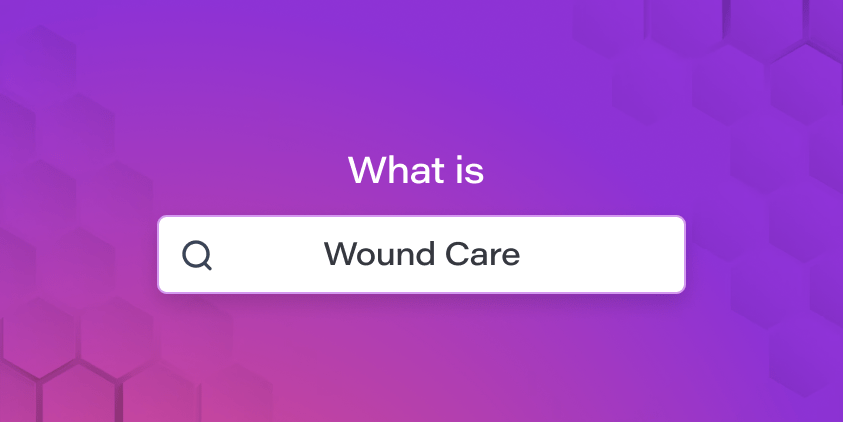Wound Care: A Comprehensive Guide for Nurses
This article was written in collaboration with Christine T. and ChatGPT, our little helper developed by OpenAI.

Definition
Wound care is the process of managing and promoting the healing of various types of wounds, such as surgical incisions, pressure ulcers, and traumatic injuries. It involves assessment, treatment, and prevention strategies tailored to the specific needs of each patient, with the goal of minimizing pain, infection, and complications while optimizing healing.
Related Terms
- Debridement: The removal of nonviable tissue, debris, and foreign materials from a wound to promote healing and reduce the risk of infection.
- Pressure ulcer: A localized injury to the skin and/or underlying tissue, usually over a bony prominence, resulting from prolonged pressure or pressure combined with shear and/or friction.
- Wound dressing: A sterile material applied directly to a wound to protect it, absorb exudate, and maintain a moist environment conducive to healing.
Synonyms, Definitions, and Examples
| Synonym | Definition | Example |
|---|---|---|
| Wound management | The process of assessing, treating, and preventing wounds, focusing on optimizing healing and minimizing complications. | Nurses use evidence-based wound management practices to care for patients with various types of wounds. |
| Wound healing | The complex process through which the body repairs damaged tissue, involving inflammation, proliferation, and remodeling phases. | Proper wound care supports the natural wound healing process and helps minimize the risk of complications. |
| Wound assessment | The systematic evaluation of a wound’s characteristics, such as size, depth, and appearance, as well as the patient’s overall health and risk factors. | A thorough wound assessment is essential for guiding appropriate interventions and monitoring the progress of healing. |
Assessment Techniques and Tools
Wound assessment techniques and tools include:
- Visual inspection of the wound, noting its size, depth, color, and presence of exudate or necrotic tissue.
- Palpation to assess for pain, tenderness, warmth, or induration, which may indicate infection or other complications.
- Measurement of the wound dimensions, using a ruler or wound measurement tool, to track changes in size over time.
- Evaluation of the surrounding skin and tissue for signs of inflammation, maceration, or other abnormalities.
- Assessment of the patient’s overall health, including nutritional status, comorbidities, and risk factors that may impact wound healing.
- Documentation of the wound assessment findings using standardized tools or forms, such as the Pressure Ulcer Scale for Healing (PUSH) Tool or the Bates-Jensen Wound Assessment Tool.
Assessment Frameworks
Several wound assessment frameworks are used by healthcare professionals to guide the evaluation and management of wounds. Some of these frameworks include:
- TIME: Tissue management, Infection or inflammation control, Moisture balance, and Epithelial edge advancement. This framework helps guide the assessment and treatment of chronic wounds.
- Wound, Ischemia, and foot Infection (WIfI) classification system: This system is used to classify the severity of diabetic foot ulcers and guide treatment decisions.
- Wound bed preparation: This concept involves assessing and managing the wound environment, including debridement, bacterial balance, and moisture management, to optimize healing.
Assessment Documentation
Proper documentation of wound assessments is essential for monitoring healing progress, guiding treatment decisions, and facilitating communication among healthcare providers. Key aspects of wound assessment documentation include:
- Describing the wound’s location, size, depth, and appearance, including the presence of exudate or necrotic tissue.
- Documenting the patient’s pain level, using a standardized pain assessment scale.
- Recording any interventions performed, such as wound cleansing, debridement, or dressing application, along with the patient’s response to these interventions.
- Noting any patient education provided regarding wound care, prevention strategies, or self-management techniques.
- Updating the patient’s care plan as needed based on the wound assessment findings and the patient’s overall health status.
Legal and Ethical Considerations
Legal and ethical considerations in wound care include:
- Adhering to evidence-based practice guidelines and professional standards for wound assessment, treatment, and prevention.
- Respecting patient autonomy and obtaining informed consent before performing any wound care interventions.
- Maintaining patient confidentiality and adhering to privacy regulations, such as the Health Insurance Portability and Accountability Act (HIPAA), when documenting and sharing wound assessment information.
- Advocating for patient needs, including appropriate resources and referrals for specialized wound care services if needed.
- Continuously updating knowledge and skills related to wound care through ongoing education and professional development.
Real-Life Examples or Case Studies
Case studies in wound care provide valuable insights into the complex process of wound assessment and management, highlighting the importance of a comprehensive and individualized approach. Examples include:
- A patient with a chronic venous leg ulcer that improves with compression therapy, wound cleansing, and moisture-retentive dressings.
- A patient with a diabetic foot ulcer requiring debridement, offloading, and close monitoring of blood glucose levels to promote healing.
- A patient with a pressure ulcer that resolves through a combination of repositioning, pressure redistribution surfaces, and appropriate wound dressings.
- A patient with a surgical wound experiencing delayed healing due to infection, which is successfully managed with antibiotic therapy and wound care interventions.
- A patient with a traumatic injury requiring a multidisciplinary approach to wound care, including surgical intervention, nutritional support, and psychological counseling.
Resources and References
For further learning and professional development in wound care, consider the following resources:
- Wound, Ostomy, and Continence Nurses Society (WOCN): https://www.wocn.org/
- WoundSource: https://www.woundsource.com/
- Journal of Wound, Ostomy, and Continence Nursing (JWOCN): https://journals.lww.com/jwocnonline/pages/default.aspx
- Wound Care Education Institute (WCEI): https://www.wcei.net/
Conclusion
Wound care is an essential aspect of nursing practice, requiring a comprehensive and patient-centered approach to assessment, treatment, and prevention. By staying up-to-date on the latest evidence-based practices, adhering to legal and ethical principles, and utilizing available resources, nurses can play a vital role in optimizing patient outcomes and promoting healing.
